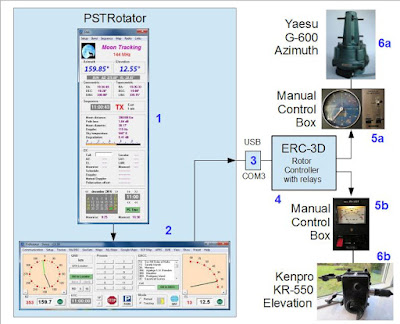I've had a strange experience with my HF-antenna. Here follows the story:
Something was wrong with my antenna. I could not achieve the QSOs I was used to. I called people, but they did not answer. Listening was normal, but transmitting suffered. What was wrong?
My HF-antenna is a horizontal wire loop. I measured the resistance of the loop. It was 1.2 ohm as usual. Then my suspicion turned to the ATU which was sitting outdoors under the roof. Could corrosion have harmed the relays? Was there a bad component on the balun PCB?
I took the ATU down and measured the attenuation from input to output using 20 W RF.
- 3.5-14 MHz close to 0 dB
- 18 MHz about 0.5 dB
- 21-28 MHz about 0.7 dB
The attenuation figures above are normal. The problem was not the ATU.
The balun was the next object to investigate. I discovered that a screw had become loose. It was the screw securing the wire from the balun output to the antenna terminal. The antenna was thus galvanically disconnected from the balun because this particular screw had gone loose! Here was the explanation of the mysterious lack of contacts! Although galvanically disconnected, there was still a small capacitance between the balun terminal and the antenne wire. I estimated this capacitance to be 1 pF or less.
 |
| No connection between balun and antenna. |
Before I started the repair job, I had three QSOs with the faulty antenna:
- RA0AUC, 20m, my signal -22 dB, JT9
- LU8HGI, 15 m, my signal -20 dB, JT65
- RN6HGN, 15 m, -25 dB, JT9
The missing antenna connection reduced my power from 5 W to about 50-100 mW (estimated). And the 3 QSOs above were all run with that low power! I find that amazing and a tribute to the digital protocols JT65 and JT9, which were both invented by
Joe Taylor, K1JT.
Regards from OZ1BXM Lars Petersen
Homepage:
oz1bxm.dk
















